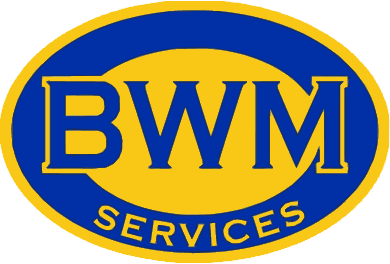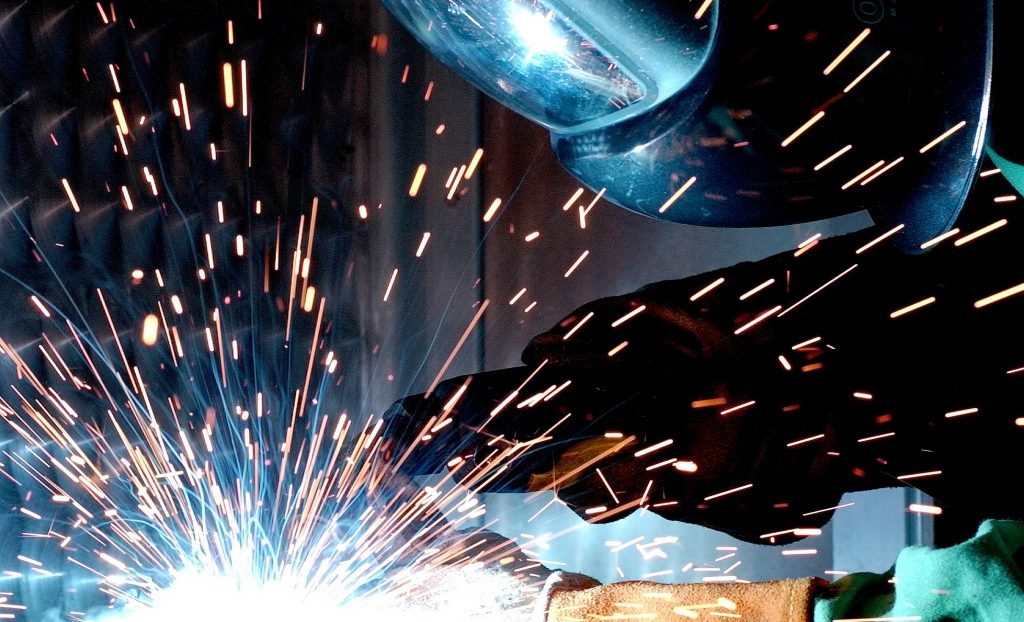The welding industry’s employment landscape is rapidly continuing to change. With shifts and more sophistication in education and technology, the welders required in the workforce today differ significantly from those desired even 15 to 25 years ago. The greatest challenge, as employers have found over the past few years, is finding the right kind of welders to do the work they need to have done.
Welders used to be able to be trained quickly and simply. They were taught how to weld, and that was good enough to become employed. You could easily get a job that way. Welding has matured into an industry with increase with increased automation, advanced equipment and higher levels of documentation required to quality control and code compliance. Therefore, there is more specialization and a greater need for welders who understand more than how to hold a torch and join metal. That’s one challenge.
The second challenge is that of the shrinking welding workforce in comparison to the growing number of jobs available. According to figures from the U.S Bureau of Labor Statistics, the number of welders in the United States reached 555,000 in the 1980s. By 2013, that number plummeted to 343,000. Recent bureau projections say the number of welding jobs will increase by 6 percent by 2022. However, the American Welding Society predicts an even larger increase in available jobs, stating the field could grow as much as 10 percent.
The industry is facing a talent shortage — something that is widespread across the U.S. In fact, Manpower Group’s annual Talent Shortage Survey, released in mid-May, reveals that 32 percent of U.S. employers report difficulties filling open positions because of talent shortages, with skilled trade vacancies remaining in the No. 1 position as “hardest to fill.” In addition, while it’s a decrease of 8 percent over last year’s figure of 40 percent, talent shortages do have an impact on business operations.
How do you solve the issue of finding welders who are trained to meet the demands of employers striving to remain globally competitive? How do you fill the growing number of open jobs when the workforce has shrunk considerably over the past 30 years? The disconnect between employers, education and prospective employers needs to be broken down as well as the ongoing confusion between a trained welder and an educated one. They are completely different things.
BWM Discusses What the Shaping of an Educated Welder Involves
We have to considering welding as a maturing, changing market. We are noticing higher levels of specialization, not only in equipment, but in applications, and even more exotic materials, such as the increase in aluminum and advanced-high-strength steels.
This change is likened to the shift in agriculture. Years ago, most individuals learned how to farm on the job, from relatives. It was skill handed down and picked up through hands-on work in the field. In fact, when colleges were formed through the Morrill Land-Grant Acts in 1862 and 1890, the industry, as one that produced educated farmers as opposed to trained farmers, was changing. The science behind agriculture was new.
Meeting the needs of the industry required agriculture education to change in the 1990s to address new specializations and has since grown dramatically. Today, when you review the technological advances in agriculture and how the industry has expanded, you realize how many different degrees are available in this area, including:
- animal husbandry
- agronomy
- horticulture
- forestry
- plant genetics
- aquatics
- conservation
Simply put, agriculture has become a specialized field of study and employment, and those entering the industry need a much broader knowledge base than they did prior to even the 1980s.
Welding and even broader career and technical education (CTE), are progressing along the same evolutionary path when it comes to specialization and the industry-driven need for different, more knowledgeable welders, whether they are working in a fab shop, a manufacturing plant or in the field on a construction site or oil rig. Additionally, each of these areas needs a welding specialist with different skill sets. While the job markets are changing and advancing, the education environment, until recently, has not kept pace with industry.
Welding schools and employers both are in a crux. Schools — career technical education centers, community colleges and four-year institutions — ponder how much they need to specialize to address regional talent shortages, while employers need productive, dedicated employees in their facilities to produce a product.
When discussing employ-ability in the field of welding, and knowing there will be a need for 378,000 welders by 2022, what does that truly mean? Are these welders who are only pulling triggers and burning rods? Or, does this number include engineers, technologists, robotic welding operators, mechanized orbital system operators, laser welding cell technicians, quality control engineers and other more specialized roles required in present-day and future welding operations?
We need to ask ourselves who is going to fill the open jobs for inspectors down the road. Who is going to be capable of running automated cells, which demand that welders work in a very different way than when they weld manually? Having the right employees on your shop floor or in the field depends on education, not just skills training.
Think about this recent real-life example: An employer hires a new worker straight out of an associate’s degree program. The company also has an automated welding cell that they think is broken. The new hire examines it, re-configures and repairs it, and has it up and running, utilizing the skills he learned in his degree program. He came out of school with the ability to assess, evaluate and fix a sophisticated piece of welding equipment as a “green” welder.
Educated Employees and Today and Tomorrow at BWM Services
There are numerous problems at play when you consider the definite link between education and employment. While you keep hearing more welders are need, this is not exactly the right solution. Who and what is needed, as well as what kind of training do they have to have to meet the challenges of today and tomorrow need to be asked.
Not every new hire of the future will need to have a four-year welding engineering degree. Welders are still needed who can perform manual welding processes, and operators are also needed who have training at a two-year institution and an associate’s degree. However, one thing is certain, the level of education required for emerging technology must be advanced, not only for new welders coming out of school but also for those with potential on the shop floor.
Recently, there was a manufacturing company that assessed every employee on his or her skills, including the company president. The results showed that everyone needed a training/education refresh, including the president. Ultimately, the company spent more than $25,000 on workforce development.
Not only is workforce development for manufactures a hot topic in the public sector, but it is in the government as well. Legislators at the state and federal level all want U.S. manufacturing to be competitive on a global basis. The American Recovery and Reinvestment Act amended the Trade Act of 1974 to authorize a grant program in 2009, which assisted community colleges and other eligible higher education institutions with funds to deliver education and career training programs that can be completed in two years or less. When President Obama signed the Health Care and Education Reconciliation Act in March 2010, the Trade Adjustment Assistance Community College (TAACCT) Grant program received $2 billion of funding over four years.
The programs supported by TAACCT grant monies are overseen by the U.S. Departments of Labor and Education and are designed for workers (WIN) operates a system of more than 60 job centers throughout the state. Each center serves as a one-stop resources for both businesses and job seekers, offering training services, job placement assistance and career counseling. The centers are funded through federal Workforce Investment Act funds, as well as funds from other federal, state and local partners.
In addition, Mississippi has 15 community and junior colleges that administer its Workforce Enhancement Training Fund, which allows these schools to partner with companies in the state to develop a “loyal and productive workforce,” by creating custom job training programs carried out through the participating colleges.
The state also has other initiatives, including the Mississippi Corridor Consortium (MCC) Existing Industry Training Program, run by four community colleges and focused on high-cost training that results in immediate improvements in employee skills. This training is offered at no cost to the company. The program offerings include welding. Additionally, through the Center of Manufacturing Technology Excellence operated by East Mississippi Community College, participants can learn various manufacturing skills, including robotics, mechatronics and shielded metal arc welding.
Another example of a state that takes workforce development seriously, especially in light of its strong ties to the U.S. automotive manufacturing industry is Michigan. As the Michigan Workforce Development Agency (WDA) noted, as the state’s economy continues to gain momentum, companies in the state still haven’t overcome the challenge of finding “talent with the skills they need.” That’s why, in 2013, the state supported creation of the Skilled Trades Training Fund (STTF).
The STTF is designed to create public-private partnerships with businesses to design training models that adapt in real time to changing employer demand. The program provides competitive awards for employer-responsive training that enhances talent, productivity and employment retention, while increasing the quality and competitiveness of Michigan’s businesses. Overall, the goal is to make sure employers have access to the talent they need and individuals have the skills required for in-demand jobs.
Training providers include Michigan community colleges, licensed proprietary schools, businesses with exclusive training and equipment that is not available elsewhere, and vendors offering operation of equipment or systems they provided.
Businesses that are eligible to receive funding must actively participate in developing the training and also commit to hiring and/or retaining individuals at the completion of training. Also, new jobs created should be filled by individuals recruited through the program. Training can range from classroom sessions to on-site training at an approved location and even apprenticeships. All training must be job specific. Now in its second year, the fund will continue to assist companies in meeting talent challenges.
From initial training until retirement, the concept of lifelong learning and development reaches beyond government programs into strong education-industry partnerships, where leading companies partner their know-how and technology with career-technical schools, community colleges and universities. RAMTEC in central Ohio is one successful example.
Robotics Advanced Manufacturing Technical Education Collaborative (RAMTEC) grew out of a partnership among Tri-Rivers Career Center, Marion Technical College, and The Ohio State University at Marion. These schools teamed up with Yaskawa®, Faunc®, Honda®, Robot-Worx® and Lincoln Electric to operate a training center in Marion, Ohio. The center focuses exclusively on robotics and advanced manufacturing and welding plays a role in the curriculum. Training is hands-on and intensive.
Training at RAMTEC reaches across multiple student populations, including:
- high school
- college
- workers seeking to advance their skills
- those participating in the center’s industrial program
The center currently receives funding from the Ohio Department of Education’s Straight A Fund, a $250 million program designed to spur innovation in the state’s classrooms.
A $15 million Straight A Fund is allowing RAMTEC to expand to additional centers, including Cincinnati, Dayton, Toledo, Cleveland, Akron, Shelby, Newark and Plain City. Students at each of these centers will be able to earn valuable industry credentials and become productive, educated workers.
Robotics is not the only technology changing the way future (and current) welders expand their knowledge base. Over the past five or so years, virtual reality training has grabbed a strong foothold in both welding training and HR functions. Increasingly, more organizations on the education and business side are realizing virtual reality training offers many benefits and cost savings as part of a hybrid learning program and employment screening tool.
At Botetourt Technical Education Center (BTEC) in Fincastle, Va., students now have the ability to lay down their first welds virtually, with the addition of Lincoln Electric’s VRTEX® virtual reality arc welding training system. This is just one of the advanced technologies BTEC students will experience in their studies, starting this fall. The center has expanded its welding program through the addition of a new welding lab, constructed with the assistance of the Botetourt County Public Schools, the Boteourt Education Foundation, Dabney S. Lancaster Community College and numerous private industry partners.
The new lab also features ten student welding booths, an instructor’s booth, various welding machines, personal protective equipment, air ventilation and purification machines, metal-working equipment and tools, supplies and a robotic weld cell.
Closing the Gap at BWM Services
In the end, welding is welding. Two pieces of metal are going to be fused together. While that basic premise has not changed, we’re still discovering new ways to do it and new tools and technology to make it happen.
Therefore, the questions that need to be asked include: What do I need to do to allow my business to expand and grow? What are my technology and production goals in the next five to ten years? Where do I want to be? And who do I need to have onboard to help me make this happen?
The last question might be the most crucial one because we need more than people who just show up to expand and grow our businesses. We need individuals who know how to not only weld but also think strategically and technically.
Individuals often think the skills gap is one of the introductory skills. However, it’s really a middle skills gap. Entry-level workers who only know how to join two pieces of metal are not needed. The new people coming into the industry need to have the skills today that would have been considered mid-level skills five or ten years ago. It’s the whole idea of exposure to advanced equipment, processes, understanding what is happening at the arc, knowing how to use geometry and more. To achieve this, the education our workforce is receiving needs to transform to meet long-term glas and maintain a competitive edge on the world stage. The welding field is maturing into a diverse group of disciplines, and personnel with different education and skills than in the past are needed.
Source: aws.org


